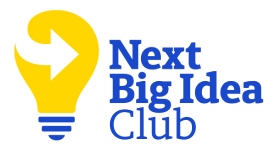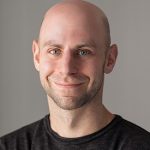READ ON TO DISCOVER:
- What a bestselling author learned by having two businesses fail
- Why good design is often invisible
- How small habits can lead to big success
James Clear is a productivity expert who uses behavioral science to help nearly half a million newsletter subscribers optimize their habits. He is also the bestselling author of Atomic Habits: An Easy and Proven Way to Build Good Habits and Break Bad Ones. Author and professor Ozan Varol recently hosted him on the Famous Failures podcast to discuss how you can use failure to enrich your future.
This conversation has been edited and condensed. To listen to James and Ozan’s full conversation, click here.
Ozan: You are an entrepreneur who has started four businesses, a travel photographer, a pretty serious weightlifter, and an author with a new book out. First of all, thank you for making everyone else look lazy. But on a more serious note, do you find that there is synergy between your diverse interests?
James: There is some overlap there. The obvious one is weightlifting—with pretty much anything health-related, the better you feel, the more energy you have to put toward other tasks. I don’t think I would still be an entrepreneur if I didn’t lift weights every week because that’s the only thing that has kept me stable enough to deal with the psychological ups and downs of running your own company.
As far as travel photography and exploring the world, in addition to just loving it, I get a lot of ideas from it. So when it comes to my writing, there’s an overlap there. Writing for me is an outlet for thinking. Daily reminders like, ‘Don’t take on too much’ and ‘Do things at a higher quality rather than doing too much,’ or ‘Be careful not to judge people’ keep me in line. There is a positive feedback loop between all of these endeavors.
Ozan: I recently read a study showing that international travel, spending meaningful time abroad, has a [positive] effect on creativity. And I find that writing is a form of therapy for me. What got you interested specifically in writing about habits and personal development?
James: In order to write a great book, you have to live it first. I played baseball through college, and there were all sorts of habits that I was [maintaining] on the field and in the classroom. Sometimes things would go well, sometimes poorly, and I didn’t really have language to explain why that was. It wasn’t until years later, after my baseball career ended and I started studying consumer and behavioral psychology, that I started putting those pieces together. Then, because I was curious about it, and it had been useful in my own life, I wanted to write about it more.
Trending: How to Transform Daily Habits into Life-Changing Rituals
The second reason was that I had started a business. For the first two years, I didn’t really know what I was doing, and I couldn’t figure out why people wouldn’t buy products or sign up for things. That led me to reading about consumer psychology. Why do people buy a product? Why does someone sign up for an email list?
As I studied more and more about that, I became increasingly interested in habits. Almost every great business is a habit-forming organization, both internally with the habits of the people who work there, and externally with the habits the customers who buy their products again and again.
“In order to write a great book, you have to live it first.”
Ozan: I read online that you started four businesses, two of which succeeded, two of which failed. Can you tell us about the two failures, and what you learned from those two experiences?
James: The very first idea that I had was to launch an iPhone app company. We designed an iPhone app, and it totally flopped—nobody bought it. It cost a couple thousand dollars to create, and in total, it brought in $17 in sales. You don’t have to be good at math to know that that’s not going to work out well. Then I started a business renting out time with puppies. The people playing with the puppies love it, but the breeders are not into it at all. I tried to get multiple breeders on board, and they were completely against it. So that didn’t go anywhere.
Then I had another business where things did start to click, mostly creating materials on building websites for people and small businesses. Gradually, that site got up to about 20,000 subscribers. That was the period when I incubated my skillset. So when I started jamesclear.com in November of 2012, I had a baseline.
The site started from zero, but I knew it was going to convert well because I knew what to write. I wrote about the things I was most interested in—human potential, performance improvement, and science. I finally found the thing that came easily. Over the next two years, it became one of the fastest-growing single author blogs on the web, and that is what catapulted me to where we’re at now.
Ozan: Within two years of launching your site, you had 100,000 email subscribers, and now over a million people visit the site each month, and 400,000 subscribe to your newsletter. That’s incredible. It’s a serious testament to the quality of the content you create. Your newsletter is one of the handful that I read religiously.
For people thinking about starting their own business or platform, what advice would you have?
James: There are three buckets of growth that I think about for the website. The first and most important is content. Every marketing strategy is easier when you have something good to sell. The second bucket is conversion and design. Design matters a lot, whether we’re talking about a physical product or getting people to convert from a website to an email list. People really gravitate towards things that look nice, but it’s also a way to serve the customer. Good design, in some ways, is invisible when it works really well, because it’s not getting in the way. Then the third big thing is external partnerships. Almost all great businesses will ride the wave of something else—Uber wasn’t possible before smartphones, for example. So for me, I had to figure out where those partnerships were. Most of mine have been content partnerships with larger organizations. So my articles and work has run in places like the New York Times, Time magazine, Entrepreneur magazine, Forbes, Fast Company, et cetera. As my work spreads to each of those little places, it’s like a little wave that I get to ride, and bring new people into the site.
“Good design, in some ways, is invisible when it works really well because it’s not getting in the way.”
Ozan: One of the things I love about your site is your annual reviews. I love how transparent you are with what went well each year, and what didn’t go well. What prompted you to start doing these annual reviews publicly?
James: There’s a tendency for everything we see online to be highly polished and beautiful. Whenever I publish an article, I’ve worked on it for like 20 or 30 hours, and you read it in five minutes. So, the annual review is a way for me to show how messy it can be sometimes. My integrity report, which I do each summer, is another way of doing that as well. I think sometimes people need to be told that it’s okay for life to have problems, for it to be challenging. That’s how it is for all of us.
Trending: 5 Reasons Life Gets Better After Your 40s
So, those reports—the annual review and the integrity report—are just ways to remind myself of that. They’re ways to pull myself back to center, and write about my values and principles. Everybody thinks they’re a high-integrity person that has values, and it’s very easy to believe that about yourself—but it’s also really easy to make choices that are “just this once” exceptions. The more that you do that, suddenly you turn around a year later and you’re in a totally different position. By keeping it top of mind once or twice a year, I’m able to pull myself back to center and make sure I don’t get too far off course.
“Sometimes people need to be told that it’s okay for life to have problems, for it to be challenging. That’s how it is for all of us.”
Ozan: There is definitely something to be said about making that commitment publicly, too, in a place where everyone can see. You’re doing your readers a great service by showing the messy process behind the finished product, because the finished product itself is really intimidating. You see this beautifully written, carefully researched blog post, but you don’t see the trials and tribulations that that got you there.
You already alluded to this, but I want to quote from your 2016 annual review: “Plain and simple, 2016 was the worst year of writing of my young career. I haven’t been at this very long, but I’ve been at it long enough to know that this year was a total disaster from a writing standpoint.” Can you give us a little bit of context to that quote and tell us what happened?
James: In late 2015, I signed a book deal to write Atomic Habits, which came out in 2018. 2016 was the year that I was supposed to write the book, but I spent the year researching and letting my perfectionism spiral out of control. It started as a book about habits, and kept expanding to all of human behavior. Eventually, I put together a manuscript that was 700 pages, which is completely insane. I went totally overboard with it, and I was pouring so much of my time and energy into the book that I wasn’t publishing articles either. So I ended up suffering on both ends. I got to the end of the year, when I was writing this annual review, and I didn’t have a finished book or a thriving website.
I used every day of 2017 to turn that 700 page manuscript into what is now 260 very lean pages that are much better than what I had before.
Ozan: What did you learn from this process of cutting your manuscript down to 260 lean pages? What would you do differently?
James: You can’t shortcut good work. One interesting thing about failure is that it’s somewhat contingent on timescale. Had I stopped at the end of 2016, the book would have been a “failure” because I would have had a bunch of random pages and no finished book. But because I continued working for another year, that same event turned into a success and a finished product, because I just didn’t stop. So on a one-year time scale, the book was a failure. On a three-year time scale, it was a success. Often, feeling like a failure is just a mid-point in the process, and not the end-point if you’re willing to continue working on it. Failure is often just work in progress, not the final result.
The second takeaway is that the way I wrote this book is not how a book should be written. I’ve talked to a variety of authors who are friends of mine. One of them, his published manuscript was like 40,000 words or 50,000 words. And including what he cut and edited from the book, he wrote 55,000 words. So he overwrote by 10%, rather than triple, like I did. So, there’s a much more effective and streamlined way to organize your thoughts and write a book. I could be more efficient in the future—I want to find a more effective strategy for writing a book, and not spend an additional year, if that’s not necessary. But I also find myself thinking that good work is not easy, and you have to be willing to suffer to make it happen.
“Failure is often just work in progress, not the final result.”
Ozan: You mentioned your struggle with perfectionism. How do you deal with that in writing or in business?
Trending: 5 Simple Strategies for Persuading Anybody
James: I’m kind of okay with it, to be honest. If I’m going to do something, I want to do it really well. The way that I try to deal with it is by taking on fewer projects, so there are a lot of things that I just don’t do. I can’t really remember the last time I watched television. I can count on two hands the number of times I’ve been to a bar this year. It’s not like I don’t see people—I’m just very selective. The vast majority of my time is spent reading and writing, learning new ideas and sharing them, traveling and taking photos, or lifting in the gym. And the time that I’m not doing those things, I’m either sleeping or hanging out with my friends or family. You can be better about being a perfectionist if you don’t try to do it in a thousand different areas. If you can stay focused, then it’s a little bit easier, and more possible to achieve that standard.
Ozan: I want to switch gears and talk about your new book, Atomic Habits. What’s the big idea?
James: The phrase “atomic habits” comes from this idea that habits can be very small, but also incredibly powerful, and deliver remarkable results. A habit should be part of an overall system, the same way that an atom is part of a molecule. Your habits can be the fundamental units of a larger purpose in your life that you’re trying to build.
The book is about why habits compound when they add on each other. It is organized around these four principles of behavior change that allow you to build a system of atomic habits.
“Your habits can be the fundamental units of a larger purpose in your life that you’re trying to build.”
Ozan: We’re coming to the end of our time, but I want to give you the opportunity to share any parting thoughts you might have about failure.
James: I don’t think you should be afraid to abandon things. As you continue to work through which projects to focus on and which ones to abandon, you endlessly need to be reassessing your priorities and what is important to you in the moment. That’s why recurring reports like the annual report and the integrity report that we talked about earlier are essential, because they give you a way to review things.
An important part of dealing with failure is reflection and review. If you can have a process for reflection and review, whether that’s a daily journal or an annual report, that allows you to revisit what has gone well and what has gone poorly. Just that five minutes to an hour of thinking will give you some insights about where to focus your energy next.
Ready for more big ideas like this? Join the Next Big Idea Club today!










